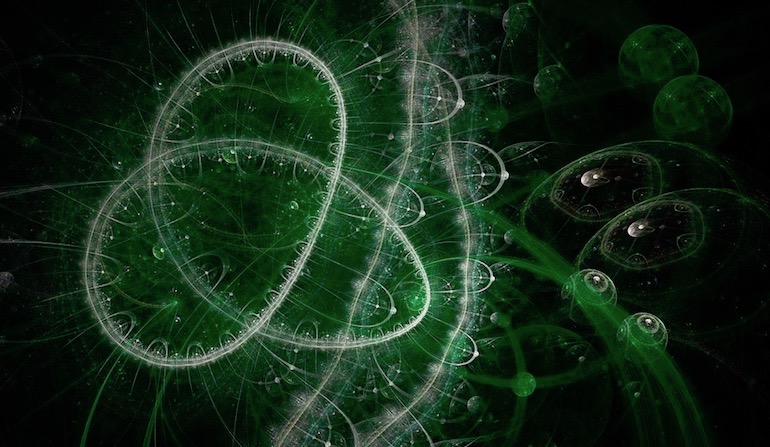 Evolution
Evolution
 Intelligent Design
Intelligent Design
Adam and the Genome and the Mysterious Origin of De Novo Genes


In his book in Adam and the Genome, which we’ve been reviewing, a final case where biologist Dennis Venema deals with evidence that is irrelevant to the existence of Adam and Eve is his claim about ORFan genes. These are genes that don’t resemble genes in other organisms. They are “orphans.”
According to Venema, a theistic evolutionist associated with BioLogos, these genes are no problem for unguided evolution to explain. That is because they spontaneously arise “de novo” from non-gene-coding sequences in DNA.
Once again, as will not come as a surprise if you have followed the present review series, Venema’s target is intelligent design theorist Stephen Meyer. (Possible alternative title for this book: Adam and Steve.) Venema writes:
Though Meyer claims that “evolutionary biologists typically use the term ‘de novo origination’ to describe unexplained increases in genetic information” and that the term “does not refer to any known mutational process,” this is simply not the case. De novo genes come from DNA sequences that are only a few mutational steps away from becoming a transcribed and translated gene.
(Adam and the Genome, p. 86)
Venema doesn’t provide enough context to show what Meyer actually wrote about de novo gene origination. Here’s what Meyer said in Darwin’s Doubt on the subject:
Many other papers invoke de novo origination of genes. Long mentions, for example, a study seeking to explain the origin of an antifreeze protein in an Antarctic fish that cites “de novo amplification of a short DNA sequence to spawn a novel protein with a new function.” Likewise, Long cites an article in Science to explain the origin of two human genes involved in neurodevelopment that appealed to “de novo generation of building blocks — single genes or gene segments coding for protein domains,” where an exon spontaneously “originated from a unique noncoding sequence.” …
Another 2009 paper in the journal Genome Research was appropriately titled “Darwinian Alchemy: Human Genes from Noncoding RNA.” It investigated the de novo origin of genes and acknowledged, “The emergence of complete, functional genes — with promoters, open reading frames (ORFs), and functional proteins — from ‘junk’ DNA would seem highly improbable, almost like the elusive transmutation of lead into gold that was sought by medieval alchemists.” Nonetheless, the article asserted without saying how that: “evolution by natural selection can forge completely new functional elements from apparently nonfunctional DNA — the process by which molecular evolution turns lead into gold.”
(Darwin’s Doubt, p. 220)
What do we see? Meyer discusses sources that explain how de novo genes are thought to come from noncoding DNA sequences — “from ‘junk’ DNA” — just as Venema says they do. Venema suggests Meyer doesn’t acknowledge this possibility, yet, plainly, Meyer cites from papers on de novo gene origin that discuss this very idea. Meyer doesn’t miss the point that Venema accuses him of missing.
Meyer is correct to explain that the processes underlying de novo gene origination are mysterious and unestablished. Geneticist Michael Lynch, for one, writes:
[A] remarkable one-third of the predicted genes in the human genome have no identifiable homologue in any other well-characterized non-primate species, even other mammals (Dehal et al. 200L). This poorly understood genomic feature is not unique to humans (or primates), as it has been repeatedly found in the sequenced genomes of other metazoans. The source and functionality of these orphan genes remains unresolved. Many might simply be derivatives of ancestral coding sequences subject to unusually rapid rates of substitution and/or rearrangement, and relatively short proteins may fortuitously arise de novo from chance open reading frames in noncoding DNA that happen to be located near spurious transcription factor binding sites (Begun et al. 2006).
(Michael Lynch, The Origins of Genome Architecture, 2007, p. 49, emphasis added)
Thus, Lynch admits that many mysteries surround the origin of de novo genes. No wonder the paper Meyer points to calls this process “Darwinian Alchemy.”
Of course, Meyer and many other ID proponents would be highly skeptical of claims that non-coding DNA could spontaneously transform into a functional gene. Indeed, one paper he cites notes that such an event is “highly improbable.” The problem is that proponents of de novo gene origins never address the likelihood of a patch of functionless “junk” DNA spontaneously mutating into a functional, useful gene. Again, here’s what Meyer writes, rebutting Long et al. 2003 who also invoke de novo gene origin:
Thus, ultimately, the scenarios featured in Long’s review essay do not explain the origin of the specified information in either genes or sections of genes. That would require a cause capable of solving the combinatorial inflation problem discussed in the previous chapters. But none of the scenarios discussed in Long’s article even addresses this problem, let alone demonstrates the mathematical plausibility of the mechanisms they cite.
(Darwin’s Doubt, p. 221)
This is the same problem we saw with Venema’s discussions of other evolutionary explanations for the origin of genes via gene duplication: no discussion is ever given to the likelihood of a noncoding region suddenly transforming into a functional gene. Venema might infer common ancestry between a gene and some noncoding region via sequence homology, but that does not demonstrate that an unguided evolutionary mechanism was likely to cause the conversion.
Unless Venema specifically addresses the likelihood of converting some non-coding “junk” sequence of DNA into a fully functional, useful orphan gene, he has not responded to Meyer’s argument.
Image credit: insspirito, via Pixabay.
